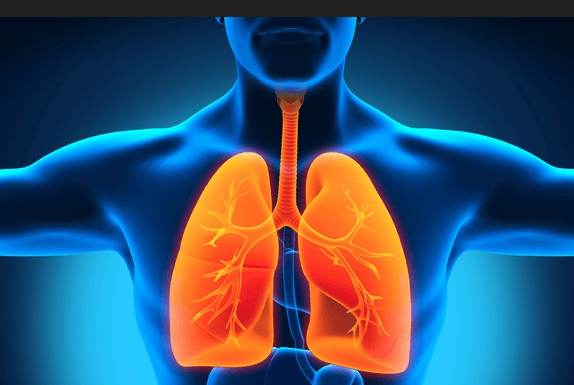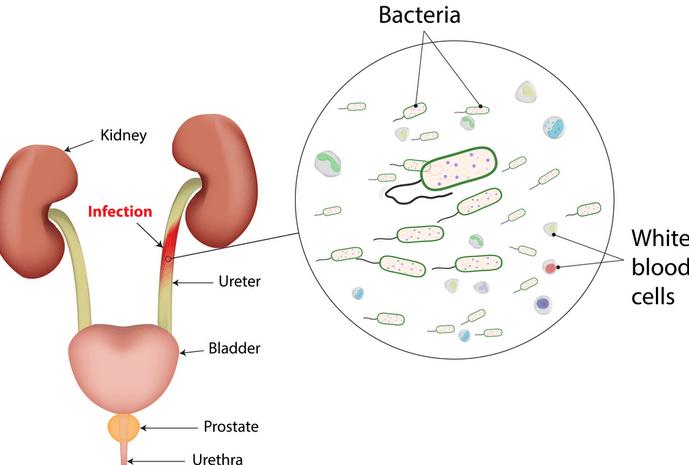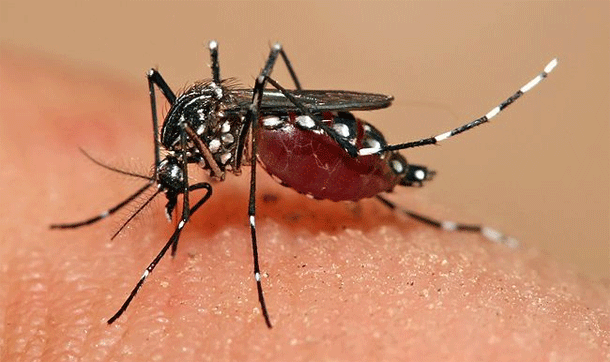Low-grade fever can be a frustrating symptom to experience. It may not seem like much, but it can signify a more serious underlying issue. This type of fever does not usually require medical attention but can indicate an infection, inflammation, or another health problem.
In addition, there are other causes of low-grade fever, such as certain medications, immunizations, and even stress. Understanding the causes of a low-grade fever and its indications can help you better manage your health. This article will discuss 12 common causes of Low-grade fever with treatment.

What is Low-Grade Fever
A low-grade fever is a mild increase in the body temperature above normal that does not exceed 38.5 degrees centigrade. The temperature may vary according to the site of measurement. The body’s temperature can also increase due to heavy clothing, physical activities, or hot temperature.
When no other signs or symptoms are involved, low-grade fevers can be treated by getting enough rest and drinking plenty of water. Taking medicine like ibuprofen, acetaminophen, or aspirin can lower the body temperature. But it is not recommended for children or infants.
Persistent fever may require medical attention, especially if accompanied by other symptoms such as a cough and sore throat.
If the fever is accompanied by severe symptoms, such as irritability, confusion, breathing problems, severe pain, and increased heart rate, seek medical help immediately.
Symptoms of Low-Grade Fever
These are the infection symptoms that you may experience with low-grade fever:
- Fatigue
- Burning sensation when urinating
- Abdominal pain or cramps
- Nausea with vomiting, sometimes without
- Muscle aches, joint pain
- A headache or an earache
- Rashes or redness of the skin
- A sore throat or shortness of breath
- Diarrhea
Other symptoms include decreased appetite, hot, swollen lymph nodes, reduced range of motion of the joints, bruises, and ear pulling.
12 Common Causes of Low-Grade Fever
These are the most common causes of low-grade fever.
1. Bacterial Infection

Infectious bacteria can make you ill, producing toxins that damage the tissue. Some examples of bacteria that can lead to infection are E. coli, Streptococcus, and Staphylococcus; the usual treatment for bacterial infection is taking antibiotics. Cases of bacterial infection are:
- Strep throat is a bacterial infection that causes pain or inflammation. This condition, caused by group A streptococcus bacteria, can affect children and adults. The symptoms may include coughing and sneezing.
- Scarlet fever – this is also another kind of infection. People who have strep throat can develop scarlet fever. The symptoms of this condition are scarlet-colored rashes, fever, and sore throat.
2. Viral Infection
A viral infection is an illness or disease caused by a virus. This occurs when a virus penetrates the body through eating contaminated food, breathing polluted air, having sexual contact with someone with the virus, or having an insect bite. Vaccines can prevent these infections, such as shingles, chickenpox, hepatitis A, hepatitis B, HPV, influenza, mumps, and measles.
The typical symptoms of viral infection include:
- Fever, chills, flu-like symptoms
- Fatigue, headache, nausea, vomiting
- Rash, sore throat, ear pain
- Body pain, abdominal pain, stiff neck
- Weight loss
- Diarrhea
- Some signs of viral infection are excessive crying, hard to feed, excessive sleepiness, and a bulging spot on top of the head for infants.
If you have symptoms of viral infection, seek professional medical advice before taking any treatments. Other viral diseases, such as HPV, require more medical attention, leading to severe health conditions.
3. Lung Infections

The symptoms of lung infection include fever, shortness of breath, chronic cough, chest pain, and changes in mucus.
- Bronchitis – an inflammation of the lining of the bronchial tubes. Patients with bronchitis cough up thick mucus. This condition may develop from a respiratory infection or cold. Signs and symptoms of acute or chronic bronchitis include a cough, phlegm, shortness of breath, chest discomfort, fever and chills, and fatigue.
- Tuberculosis – is a severe disease caused by bacteria spread from one person to another. Signs and symptoms of tuberculosis include fever, chills, loss of appetite, coughing up blood, chest pain, a cough that lasts for three weeks, weight loss, and night sweats. This condition can affect other body parts, and medical attention is needed as soon as possible.
- Pneumonia – is an infection that causes air sac inflammation in the lungs. The air sacs may fill with purulent material or fluid that results from coughing with phlegm, fever, and chills. Other symptoms include shortness of breath, confusion, lower body temperature for elders, diarrhea, nausea, and vomiting. Bacteria, fungi, or viruses can cause pneumonia. See a doctor immediately if you are experiencing chest pain, persistent cough and fever, and difficulty breathing.
4. Ear Infection
An ear infection is one of the most common viral or bacterial infections which affects the middle ear. Children and adults with an ear infection may experience ear pain when lying down, fever, headache, loss of appetite, hearing and sleeping problems, irritation, and ear drainage.
If you are experiencing ear discharge, see your doctor immediately. For children, observe your child’s ear and visit the doctor if the symptoms last for more than one day or if there is fluid discharge, severe ear pain, and irritation.
Read: Top 10 Home Remedies to Get Rid of Earwax Naturally
5. Gastroenteritis
Gastroenteritis is the inflammation and irritation of the intestines and stomach, usually caused by a bacterial or viral infection. The most common symptoms of this condition include diarrhea, vomiting, stomach pain, fever, nausea, headache, and cramping. Due to vomiting and diarrhea, this situation can also lead to dehydration. You may experience dizziness, extreme thirst, dry mouth, and skin.
There are many ways to acquire gastroenteritis, such as consuming contaminated food or water, contacting a person with a virus, or not washing hands after using the bathroom. If you experience signs of dehydration or food poisoning, seek medical help immediately.
Read:16 Best Ways to Get Rid of Gas and Bloating Fast
6. Urinary Tract Infection

Urinary tract infection is an infection in an area of the urinary system, such as the ureters, kidneys, bladder, and urethra. Women have a higher risk of developing UTIs than men. Severe cases of UTI can spread to the kidneys. Some signs and symptoms of UTI include:
- Persistent need to urinate, but small amounts
- Burning sensation when urinating
- Cloudy urine
- Foul or strong-smelling urine
- Pelvic pain for women
- Red or bright pink urine
If you have signs and symptoms of UTI, contact your doctor immediately. Your doctor may recommend antibiotics. If there is no improvement after taking the medications, revisit your doctor.
7. Sinusitis
Sinusitis is the swelling or inflammation of the sinuses. When blocked or filled with mucus or fluid, germs can grow, resulting in a sinus infection. The most common causes of sinusitis include cold, allergic rhinitis, nasal polyps or small growths in the nose lining, deviated septum, and a low immune system.
For uncomplicated sinusitis, your doctor may recommend saline nasal washes and decongestants. Make sure not to use an over-the-counter decongestant for over three days, as it can worsen your condition. Moist and warm air can help alleviate the symptoms of chronic sinusitis. Inhaling steam from the warm water and a vaporizer is also helpful in improving your breathing.
Read:10 Simple Tips to Get Rid of a Sinus Infection Naturally
8. Dengue Fever

Dengue is a severe public threat in tropical or warm areas. Complications of this disease can lead to a more severe problem or death. Mosquitoes carry a dengue virus when they bite a person who takes the virus. The virus enters the bloodstream and spreads throughout the body. The symptoms of this condition include
- Sudden fever
- Nausea, headache
- Fatigue
- Joint and bone pain.
- Rashes
- Mild bleeding (bleeding gums, nosebleed)
If you think you develop symptoms of dengue, see your doctor immediately. There is no vaccine to stop dengue fever. The only way to prevent this disease is by avoiding the bites of mosquitoes, especially if you live in warm or tropical countries.
9. Medications
Some medications can cause a short-term low-grade fever when used, which is also called drug fever.
Common drugs that cause drug fever include cephalosporin, penicillin, phenytoin, quinidine, procainamide, and so on. You can contact your doctor to adjust your dose or use other medications if a fever occurs.
10. Autoimmune disease
Autoimmune diseases are caused by the immune system’s immunity to the components of the body. Usually, the immune system only reacts to foreign objects that invade the body, such as bacteria, viruses, parasites, and transplants.
In some cases, the body’s immune system itself is abnormal. This can cause the immune system to mistake its components for foreign objects to attack.
Certain chronic autoimmune diseases, such as rheumatoid arthritis, can cause a low-grade fever. The consequences are severe and even life-threatening if it is not controlled effectively.
11. Thyroid issues
Thyroid problems such as subacute thyroiditis can also cause a low-grade fever. Thyroiditis is usually caused by infection, trauma, autoimmune disease, or drugs. Other symptoms include fatigue, muscle pain, and goiter; neck pain often spreads to the ears.
12. Leukemia or lymphatic cancer
Leukemia or lymphatic cancer can cause a persistent and unexplainable low-grade fever.
Other symptoms include swollen lymph nodes, night sweats, loss of appetite, bone and joint pain, headaches, and unexplained weight loss. If the above symptoms occur, you need to seek medical help immediately.
Causes of Low-Grade Fever in Children
Low-grade fever in infants and children is a common condition. It usually refers to oral readings of 99.5 degrees Fahrenheit to 101 degrees Fahrenheit or rectal readings of 100.4 degrees Fahrenheit to 100.9 degrees Fahrenheit.
Babies and children are more susceptible to bacterial or viral infections due to their weaker immune systems. Influenza and the common cold are the most common causes of low-grade fever. However, in some cases, it may also be caused by other diseases. These common causes include:
- Upper respiratory tract infection can cause cold symptoms such as cough, nasal congestion, and sore throat. A cough may also indicate a strep throat or sinus infection.
- Gastrointestinal infections can cause infants to vomit, have diarrhea, and fever.
- Urinary tract infection: You will find cloudy urine or a strong smell.
- Chickenpox: Chickenpox is caused by a virus and can also cause fever. You will find blisters on your child’s skin.
- Mumps: This is caused by a virus infecting the salivary glands, which can cause fever and swelling of the salivary glands.
- Dengue fever: This is an acute infectious disease caused by the transmission of the dengue virus through mosquito vectors. Dengue fever can cause headaches, severe aches, and pains in muscles, bones, and joints, swollen lymph nodes, and persistent low-grade fever.
- Allergic reactions: Severe allergic reactions can cause a low-grade fever, vomiting, and diarrhea.
- Teething: The child’s body temperature will rise when teething, and the symptoms will disappear automatically after a while.
- Measles: Measles is the most common acute respiratory disease in children and is highly contagious. This can cause fever, conjunctivitis, and red spots on the skin.
If low-grade fever in babies and children persists, you should contact your doctor immediately.
When to See Your Doctor?
Some cases have a low-grade fever that may be a symptom of a severe condition and should be diagnosed immediately by an expert. If you are experiencing these symptoms, seek medical attention immediately:
- Rapid heart rate
- Respiratory or breathing problems, such as wheezing, shortness of breath
- Severe pain
- Vomiting blood or blood in the stool
- Chest pain, tightness, or palpitation
- Seizure
- Confusion, hallucinations, delusion






